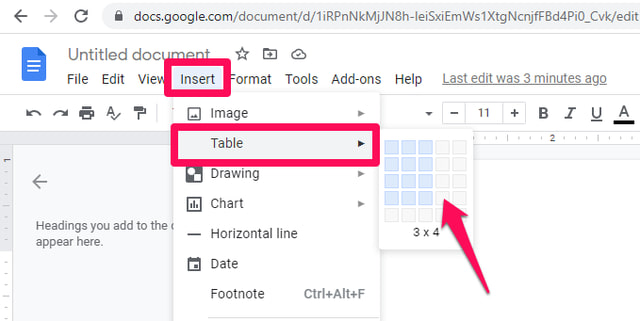
In today’s digital age, email remains a cornerstone of communication, especially in professional settings. Gmail, being one of the most popular email platforms, offers a wide range of features to enhance your email experience. However, one feature that seems to be missing at first glance is the ability to insert tables directly into an email. Fear not, for where there’s a will, there’s a way! This article will guide you through the process of inserting tables into your Gmail messages, making your emails more structured and easier to digest.
Understanding the Need for Tables in Emails
Have you ever received an email so cluttered with information that deciphering it felt like unraveling a mystery? Tables can transform that clutter into a neatly organized presentation, making it easier for your recipients to understand the information you’re sharing. Whether it’s data from a recent study, a financial report, or a simple schedule, tables can significantly enhance the readability of your email.
Creating Your Table: The Preliminary Steps
Before we dive into the heart of Gmail, let’s start where your table will take its first breath—either in Google Sheets or Microsoft Excel. These platforms offer the perfect environment to create, format, and stylize your table. Here’s a quick rundown:
- Open Google Sheets or Microsoft Excel: Begin by entering your data. Feel free to use bold or italics for emphasis, and don’t shy away from adding cell borders or colors to make your table pop.
- Copy Your Table: Once your masterpiece is ready, select the entire table and copy it. You can right-click and select “Copy,” or use the keyboard shortcuts Ctrl + C (Windows) or Command + C (Mac).
Bringing Your Table into Gmail
Now, let’s get to the exciting part—inserting your table into a Gmail message:
- Compose Your Email: Head over to Gmail and start composing your message as usual.
- Paste Your Table: Place your cursor where you want your table to go, right-click, and select “Paste,” or use the keyboard shortcuts Ctrl + V (Windows) or Command + V (Mac).
- Troubleshooting: If your table looks more like an abstract painting than structured data, you might have “Plain Text Mode” enabled. Simply disable it by clicking the three dots at the bottom right of the message window and deselecting “Plain Text Mode.”
Editing Your Table in Gmail
While Gmail won’t let you modify the table’s structure (like adding rows or columns), you can still tweak the content and formatting within the cells. This flexibility allows you to make last-minute changes directly in your email, ensuring your table is just right before hitting send.
Why Tables Matter
Incorporating tables into your emails can significantly improve how your message is received. It’s not just about aesthetics; it’s about clarity and efficiency. Tables allow you to present complex information in an accessible format, making it easier for your recipients to understand and act upon your message.
Final Thoughts: Beyond the Table
While we eagerly await the day Gmail introduces a built-in table feature, the methods outlined above provide a reliable workaround. By leveraging the power of Google Sheets or Microsoft Excel, you can continue to enhance your emails with structured, informative tables.
By embracing these techniques, you can enhance your emails with clear, structured tables that convey your message effectively and professionally.
FAQs
- Can I insert a table directly in Gmail without using Google Sheets or Excel?
Unfortunately, Gmail does not currently offer a direct method to insert tables. The workaround involves creating your table in Google Sheets or Excel and then copying it into your Gmail message. - Will my table formatting be preserved when I copy it from Google Sheets or Excel to Gmail?
Yes, most formatting options like bold, italics, and cell borders will be preserved when you copy and paste your table into Gmail. - What should I do if my table doesn’t look right after pasting it into Gmail?
Ensure that “Plain Text Mode” is disabled in your Gmail settings. This mode can prevent your table from displaying correctly. If the issue persists, double-check your table in Google Sheets or Excel to ensure it’s formatted properly before copying it again.
